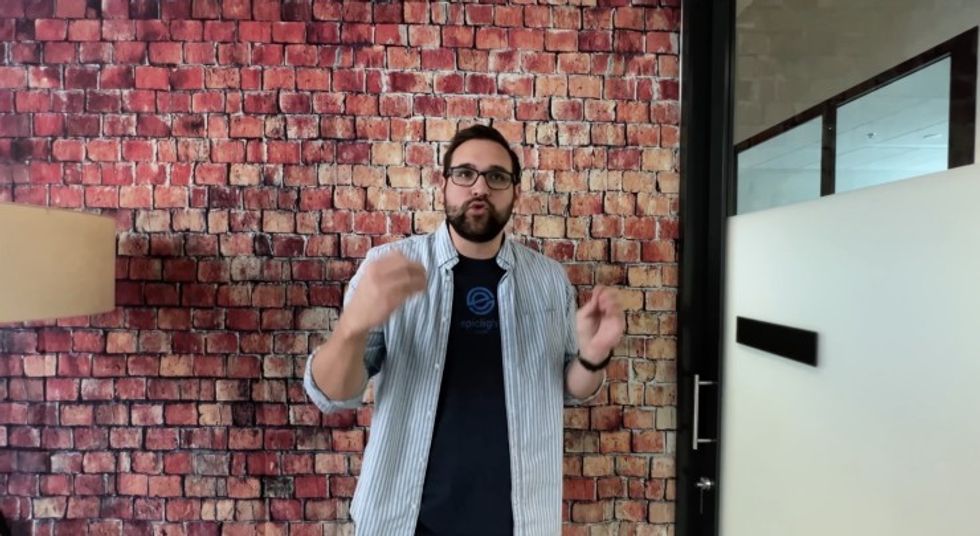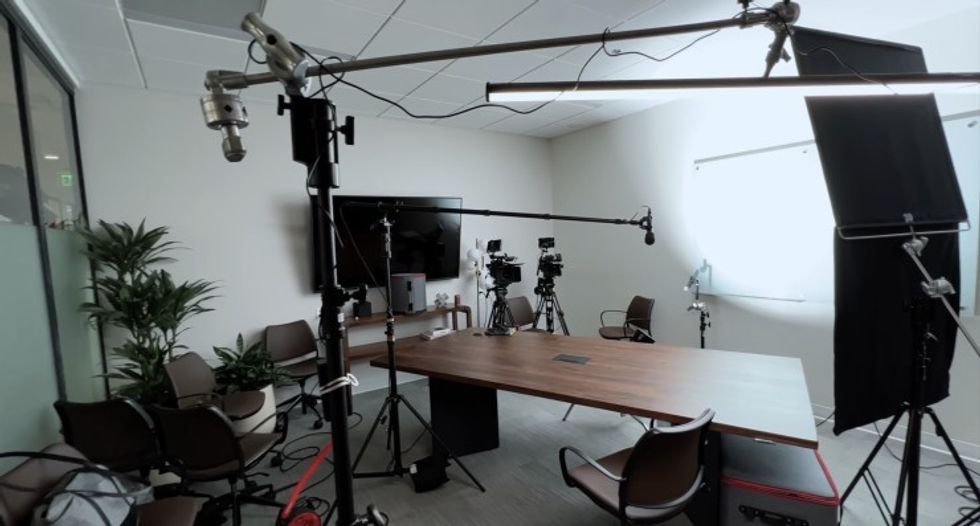Shooting in Small Spaces? Then You Need to Know This
This will change the way you shoot in small rooms.

If you shoot a lot of corporate videos, then you probably find yourself doing interviews in small, bland conference rooms. While I'm sure there is some study that's been done on the mood-lifting effects of a particular shade of white, working with white walls in a small space just doesn't cut it for your shoot.
Even when you have limited time and resources, you have to find a way to get the job done and do it well. When viewing your work, most people won’t know that you only had thirty minutes to do four interviews or that you were limited to two lights and a bounce card. You have to find a way to use what’s at hand to make a space look great.
That’s just what Epic Light Media does in this video. They show us how to quickly and effectively transform a small boring conference room into an interesting interview set. Check out their video, then let's break down the different methods you can use to elevate your small space.
How to Make Small Spaces Interesting
As always, the first step is placing the camera.
In small rooms, it’s best to shoot diagonally, from one corner to another. This helps the room look much bigger than it is. You might have to adjust a table to the same angle as your camera. It’ll look strange in the room, but remember it’s all about how it looks on camera. If you have multiple cameras, keep them at least thirty degrees apart or the angles will look too similar.
Often, the choice of which corner to shoot into — the more interesting one — is going to be obvious. You don’t want to be shooting into a completely white corner. But let’s say you’re in a conference room that is surrounded by lifeless walls.
There is an easy and cheap solution for this. You can use a vinyl brick backdrop and stretch it across one wall. In camera, the backdrop looks like some solid integral masonry work. Then, you can use a lamp, and place it in front of the wall. This highlight on the backdrop immediately elevates the space and is ready to go.

First, you want to turn off all of the fluorescent lightings in the room. No offense to fluorescent lighting, but they’re ugly and have a weird color temperature. Make sure to check around for emergency lights that you can’t turn off. You don’t want to place your subject right under these.
You can use an Aputure 1200d as a key light, bouncing it off of a wall next to their subject to create a large, soft source. This will make the background too bright, so add some negative fill. For a backlight, you can use a tube light that adds a nice shape with a soft natural look. It’s an extremely minimal setup, but when stretched for time, shooting with very bright lights allows for more options and versatility.
Epic Light Media used a Sennheiser MKH 50 and boomed over their subject for audio. They decided to forgo a mixer here and record audio straight into the camera. It’s a risky choice, but they make the point that many cameras now have decent preamps and, if paired with a good mic, there is a lot you can do in post to get the sound to where you want it to be.

Of course, there’s always going to be more you want to do with your shot, but you’ve often got limited time and resources on jobs like this. Try to find new, quick, and easy ways to manipulate your small space with vinyl backdrops and lighting. Filmmaking is all about problem-solving, so flex that creative muscle and find what works for your shoot.
In the comments, let us know some of your helpful techniques for shooting in small rooms.
Source: Epic Light Media











